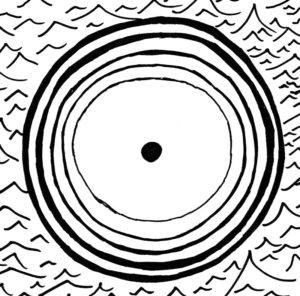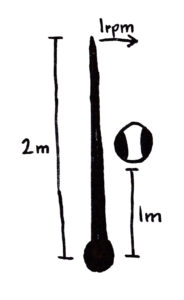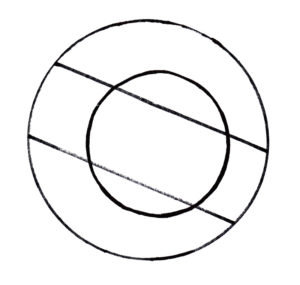Geometry, trigonometry, and calculus are required for this challenge.

We left an unsolved puzzle at the end of Fascinating Frequencies 3. We want to find the time it takes for a stone to stop after hitting water. The stone has an initial velocity of 1 m/s, a mass of 1 kilogram, and radius 10cm. The force acting on it from gravity is 1kg*g down. The buoyant force acting on it is the weight of the water displaced by the stone. The water has density 0.9982 kg/m3. The friction from the water in any direction acts perpendicular to the surface, inwards, with a strength equal to the sine of the angle multiplied by the density of the water.
\vec F_G=1kg g\ down\\[8pt] \vec F_B=\frac{998.2kg gV_w}{m^3}\ up\\[8pt] \vec F_d=\frac{469.2kgA_f\vec V^2}{m^3}\ up

